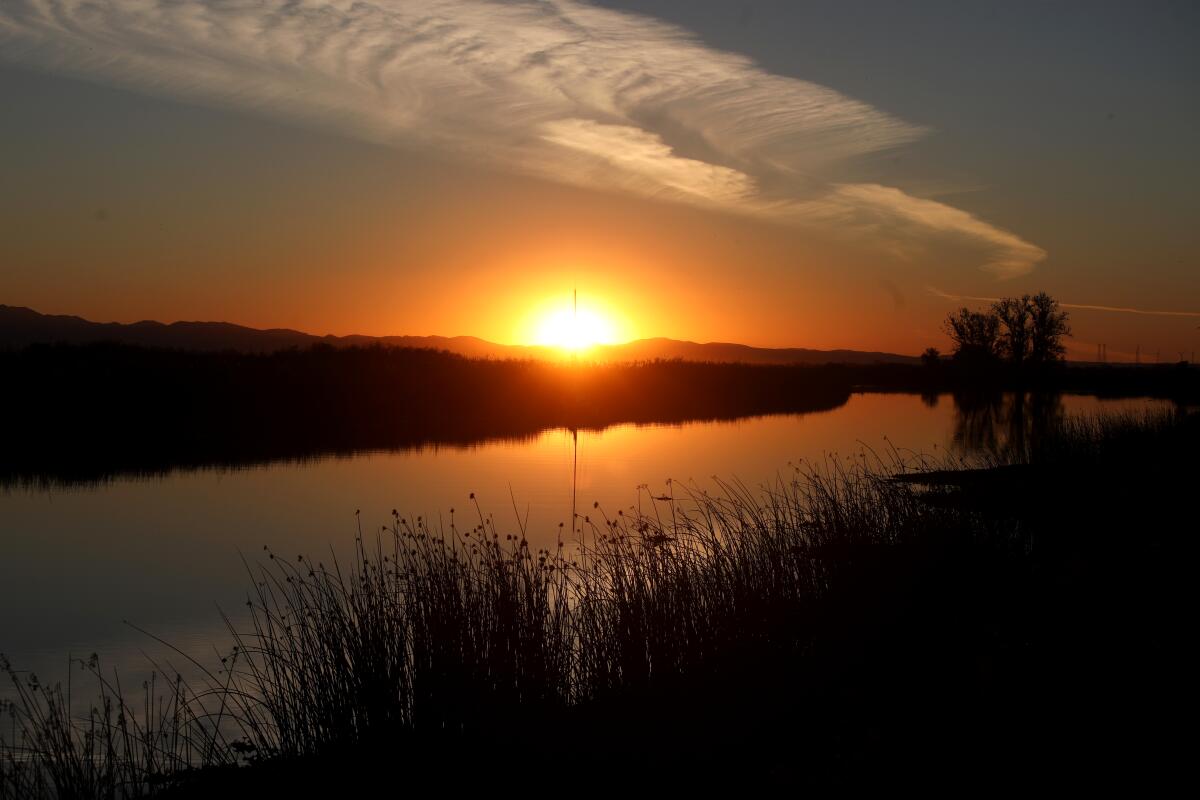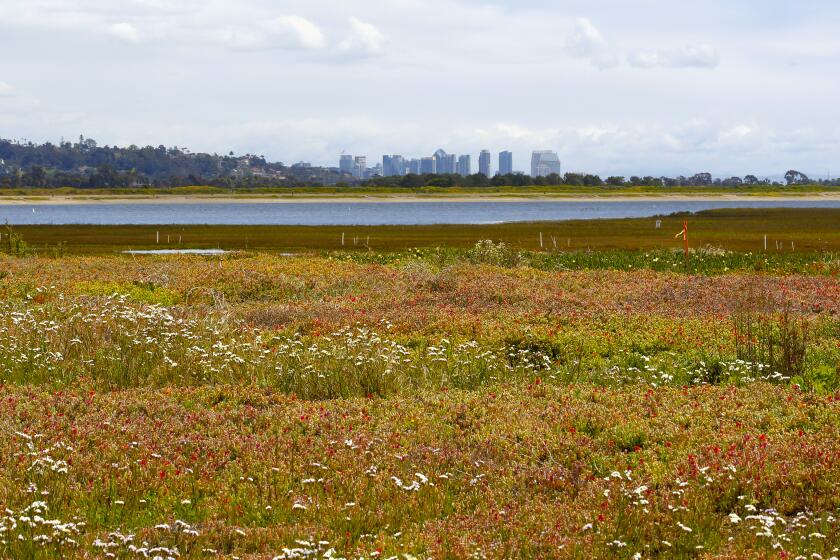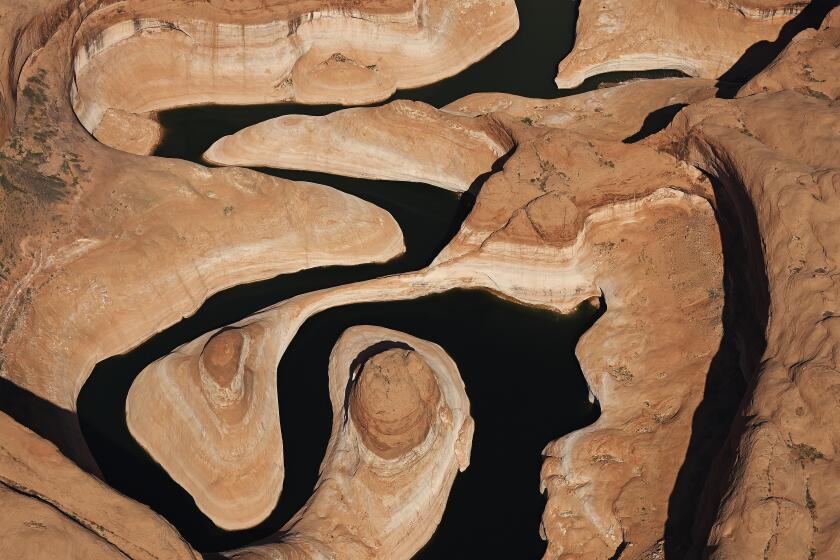Supreme Court scales back clean water protections. What does it mean for California?

- Share via
The Supreme Court’s landmark decision scaling back federal protections for many wetlands and streams has drawn criticism from scientists and environmental advocates, who say the gutting of safeguards will jeopardize water quality throughout the arid West.
California’s water regulators say the ruling will be harmful for protections nationwide, but the more stringent state protections of wetlands won’t be affected.
To examine the implications of the ruling, The Times spoke with Joaquin Esquivel, chair of the State Water Resources Control Board, about the potential effects of limiting federal protections under the Clean Water Act and how the board will continue to regulate wetlands and streams under the state’s Porter-Cologne Water Quality Control Act.
Esquivel stressed that because more than 90% of California’s wetlands have already been drained and destroyed, strong protections for those that remain are vital. He said California’s stringent protections will continue to safeguard wetlands and streams, even as the court’s decision narrows the authority of the federal Environmental Protection Agency and the U.S. Army Corps of Engineers.
One of the biggest areas of concern is the Colorado River, he said. The ruling will put at risk water quality in intermittent streams and wetlands that feed the river. That could affect quality — and treatment costs — for one of Southern California’s major water sources.
In a 5-4 vote, the Supreme Court limits federal protection for wetlands in a property rights case, saying the Clean Water Act does not usually apply to the marshy areas.
This interview has been edited for length and clarity.
What does this decision change in terms of protections for streams and wetlands?
It’s pretty devastating nationally. You look at the reality of what we know to be the science and the facts of the way our watersheds work, and the real importance of the Clean Water Act. When it comes to the streams and wetlands that are no longer protected, there’s no longer a permit or requirement to abide by rules and standards that ensure that you protect the water and the quality of water downstream from those wetlands and streams. And so, we’re not going to wake up and see this damage, but as additional development is undertaken, as activities happen, there won’t be protections or won’t be permits for activities that pull up wetlands, that degrade the quality of downstream waters.
Aren’t there protections overseen by the State Water Resources Control Board that accomplish the same thing or better?
Yes, that is correct. Porter-Cologne is a little over 50 years old. It was the model for the Clean Water Act. And so here in the state, we’re fortunate because the board did update its wetlands definition in 2019 to ensure that, because if you really think of it as a circle, the protections in the state waters and the protections that Porter-Cologne affords are larger than what the federal Clean Water Act and purview are. The caveat, and an important one there, is that it will impact interstate waters — so, most important, the Colorado River and the protections that really Southern California depends on.
Does the Supreme Court decision affect areas like the Sacramento-San Joaquin River Delta and San Francisco Bay?
No. When it comes to the legal protections within the law, within the state here, they are maintained. The difference is the reliance on federal resources and or permits, or state resources and permits to accomplish the protections. But the legal protections, the fundamental protections, are there.
Does it mean that the federal EPA will be doing less oversight of surface water bodies in California, and the state water board will basically be doing the same work it’s already doing?
Yes, that is the case. And the Army Corps of Engineers is another permitting entity within the Clean Water Act. It does a lot of important work within the state. Those wetland delineations and work the feds would cover would be shifting to the state. So it’s both the EPA and Army Corps that are probably most impacted on what their purview and work would then be covering.
Are there negatives to losing that federal oversight and regulation in California, even though the state has relatively stringent regulations?
Yes. There are resources the federal government would otherwise contribute to the state and [to] interstate waters like the Colorado River. There is real material impact to us there. It’s also just regrettable loss of protections across the nation that the Clean Water Act was providing us. It is unfortunate to see a discontinuity of those federal protections continue to emerge. We’re seeing this kind of reversion to [where] you either have a state that’s being more protective or not, because of a rollback of fundamental federal protections.
How many streams or wetlands in California no longer fall under federal protections as “waters of the United States” with this decision?
I think we may have some sense of that. The problem is, we’ve never had a real good, federal tool that delineates all this. It’s often a permit-by-permit, case-by-case delineation by the Army Corps. The work by the permitting agencies is what actually determines oftentimes if it is a wetland that’s covered and protected, either from the federal or state purview. So it’s hard to easily come up with ... what percentage of wetlands or what percentage of our features might lose that sort of protection.
(The State Water Board staff said the agency is unable to provide an estimate of the acreage of wetlands in California that have lost federal protection under the ruling.)
One of the criticisms of the ruling is that it ignores the connection of groundwater to surface water. What do you think about that?
By saying that a wetland needs to have a significant surface connection to streams, and or a connection to the federal bodies for the purposes of the Clean Water Act, it ignores what we know is subsurface flow, oftentimes from either wetlands or creeks. And just because you don’t see a significant surface flow between the features doesn’t mean that they aren’t actually connected. The federal Clean Water Act isn’t supposed to apply to groundwater. But we know there is connectivity oftentimes. So it’s problematic that we see the court has taken this idea that the wetland must have a significant surface flow. Really problematic. It doesn’t conform with the way we know our watersheds work.
Seven states have agreed to cut water use to boost the Colorado River’s depleted reservoirs, reaching a consensus after months of negotiations.
What’s the best way to summarize what California’s Porter-Cologne Water Quality Control Act does independently of what the federal government is doing?
Ultimately, the federal Clean Water Act was modeled off Porter-Cologne. Here in the state of California, we have the irrigated lands regulatory program. It regulates nitrates. And we do so under Porter-Cologne, not under the Clean Water Act, because the Clean Water Act is limited. So it’s always been the case that Porter-Cologne, the state’s water quality laws, are more encompassing than the federal law, although there is significant overlap, certainly. And because we adopted definitions around what a wetland is already, we better conformed and standardized that regulatory program so that it can be ready to absorb any contraction from the federal government around their definition and their work.
How does the decision affect the streams that feed into the Colorado River, and how could that affect water quality?
It’s ultimately the impact to the quality of water that flows down and through the Colorado mainstem. These wetlands, ephemeral streams and other features that aren’t protected may be developed over, or are no longer able to function as they are, [and] have impacts ultimately on the quality of water being served to Southern California. ... We know for every 100 milligram per liter increase in total dissolved solids that makes its way to Southern California, it’s like $200 million a year in economic impacts. That’s impacts in the need to additionally treat, impacts in the ability to reuse that water, at a time when we know we’re investing in water recycling in Southern California.
Do you think it will affect Colorado River water quality?
I think that will really depend upon the various states and the protections within them. Once you fill in a wetland, once you develop and once we find ourselves continuing to remove these features — as we see now in the state, with 90% of them having been developed over — it’s hard to get them back. The real concern is what we’ll find ourselves with after a decade of a lack of protections and ... moving back from the real progress that’s been made by the Clean Water Act. You look at the last 50 years, and I think it’s really easy for many of us to take for granted. I know it is for me, who was born in 1982 and have largely known a time when these protections were in place, and we were moving here — and are moving continuously — toward actually remedying what was a lot of damage that was done to a watersheds. It’s easy to forget.









